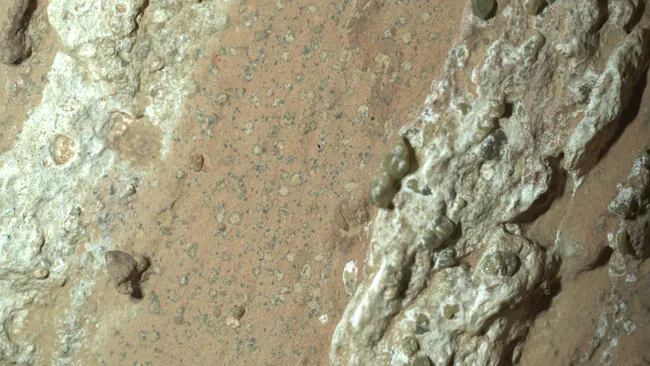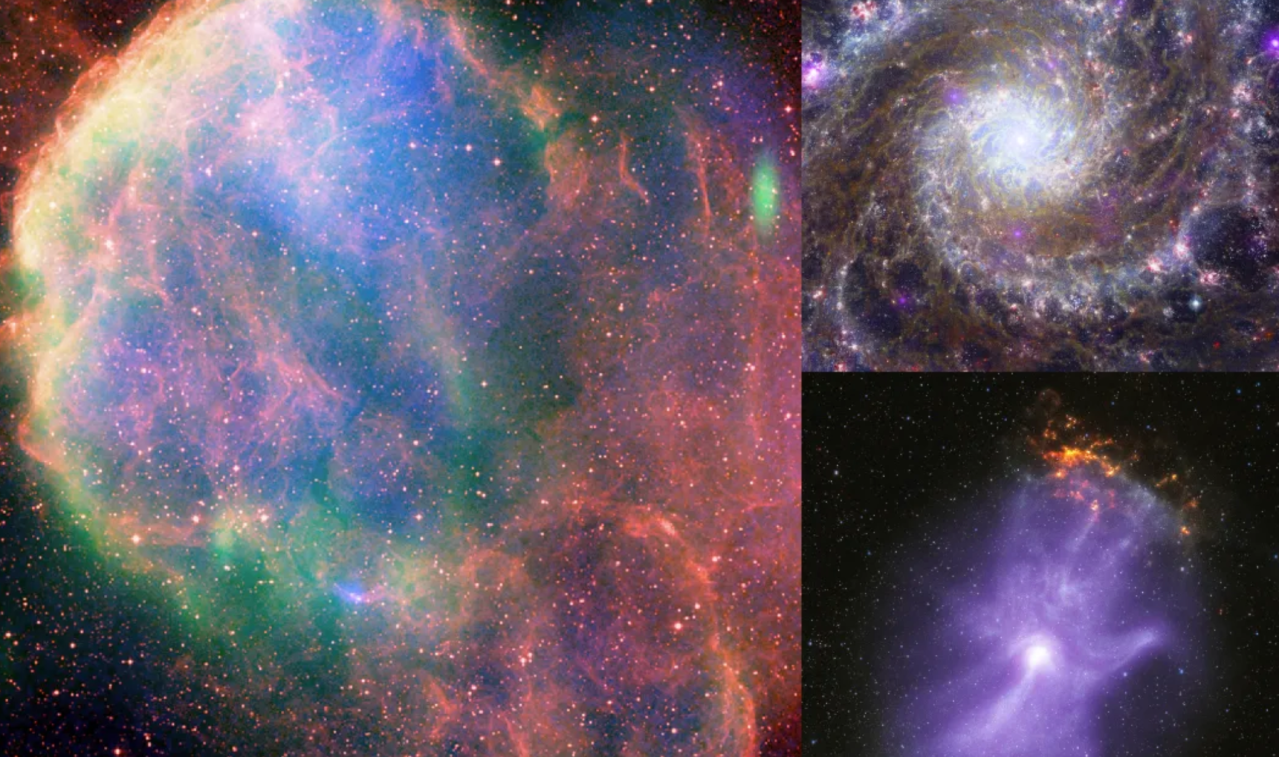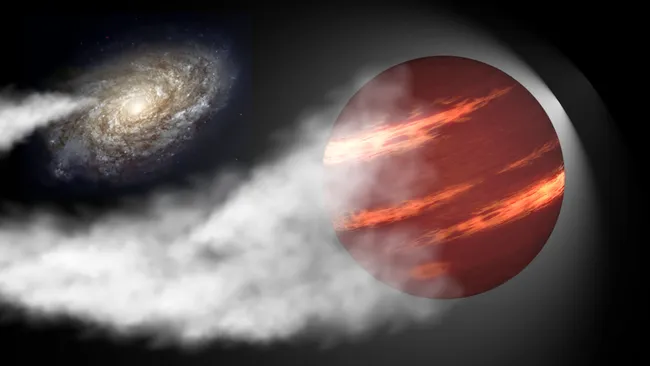Euclid images reveal a wide view of the dark universe
The Euclid mission, led by ESA (European Space Agency) with contributions from NASA, has released five new images that show the capacity of this space telescope to explore two large-scale cosmic mysteries: dark matter and dark energy. Dark matter is an invisible substance that is five times more common in the universe than “normal” matter, but has an unknown composition. “Dark energy” is the name given to the force of unknown origin that makes the universe expand ever faster.

By 2030, Euclid will create a cosmic map covering nearly a third of the sky, using a much wider field of view than NASA’s Hubble and James Webb space telescopes, which are designed to study smaller regions in greater detail. Scientists will then mark the locations of dark matter more precisely than ever before. They can also use this map to study how the strength of dark energy has changed over time.
The five new images show views of varying sizes — from a star-forming region in the Milky Way galaxy to clusters of hundreds of galaxies — and were obtained shortly after Euclid launched in July 2023 as part of its early science observations program. The mission released five images from that program last year as a preview of what Euclid would offer, before scientists analyzed the data.
The new images, related science papers and data are available on the Euclid website. A previously recorded ESA programme about these findings is available on ESA TV and YouTube.
Mission planners for NASA's upcoming Nancy Grace Roman Space Telescope will use Euclid's findings to guide complementary Roman work on dark energy. Scientists will use Roman, with its improved sensitivity and sharpness, to extend the kind of science Euclid makes possible by studying the faintest, most distant galaxies.
The curvature of space

One way Euclid will help scientists study dark matter is by looking at how this mysterious phenomenon warps light from distant galaxies, as seen in one of the new images of a galaxy cluster called Abell 2390. The mass of the galaxy cluster, which includes dark matter, creates curves in space. Light from more distant galaxies traveling along these curves appears to bend or arch, similar to the way light appears when it passes through the warped glass of an old window. Sometimes the warping is so powerful that it can create rings, sharp arcs, or multiple images of the same galaxy — a phenomenon called strong gravitational lensing.
Scientists interested in exploring the effects of dark energy will primarily look for a more subtle effect, called weak gravitational lensing, which requires detailed computer analysis to detect and reveal the presence of even smaller clumps of dark matter. By mapping that dark matter and tracking how these clumps evolve over time, scientists will investigate how the outward acceleration of dark energy has changed the distribution of dark matter.
“Because dark energy is a relatively weak effect, we need larger maps to get more data and better statistical precision,” said Mike Seiffert, NASA’s project scientist for the Euclid mission at the agency’s Jet Propulsion Laboratory in Southern California. “It’s not something where we can zoom into a galaxy and study it in detail. We have to look at a much larger region but still be able to detect these subtle effects. For that to happen, we needed a specialized space telescope like Euclid.”
The telescope uses two instruments that detect different wavelengths of light: the Visible-Light Imager and the Near-Infrared Spectrometer and Photometer (VIS and NISP, respectively). Foreground galaxies emit more light at visible wavelengths (those that the human eye can perceive), while background galaxies are typically brighter at infrared wavelengths.
“Observing a galaxy cluster with both instruments allows us to see galaxies at a wider range of distances than we could using visible or infrared light alone,” said Jason Rhodes of JPL and principal investigator for NASA’s Euclid science team working on dark energy. “And Euclid can make these kinds of deep, wide, high-resolution images hundreds of times faster than other telescopes.”
Discoveries beyond dark energy

While dark matter and dark energy are central to Euclid, the mission has a variety of other astronomical applications. Euclid's extensive sky map can be used, for example, to discover faint objects and observe changes in cosmic objects, such as a star changing in brightness. New science results from Euclid include the detection of free-floating planets (planets that do not orbit stars), which are difficult to find because of their dim appearance. In addition, the data have revealed newly discovered brown dwarfs. These objects are thought to form like stars but do not grow large enough to begin fusion in their cores, and they highlight the differences between stars and planets.
“The data, images, and science papers now being released mark the beginning of Euclid’s science results, and they showcase an astonishing array of scientific investigations beyond the mission’s primary focus,” Seiffert said. “What we’re already seeing from Euclid’s wide field of view has yielded results that allow us to study individual planets; the characteristics of our Milky Way galaxy; and the structure of the universe on a large scale. It’s both exciting and somewhat overwhelming to keep up with all of these advances.”
More about the mission
Three NASA-supported teams of researchers contribute to the Euclid mission. In addition to designing and manufacturing the sensor chip electronics for Euclid’s Near-Infrared Spectrometer and Photometer (NISP) instrument, JPL also led the procurement and delivery of NISP’s detectors. Those detectors, along with the sensor chip electronics, underwent testing at NASA’s Detector Characterization Laboratory at the Goddard Space Flight Center in Greenbelt, Maryland. NASA’s Euclid Scientific Research Center at Caltech’s IPAC (ENSCI) in Pasadena, California, will archive the science data and support U.S.-based science investigations. JPL is a division of Caltech.







